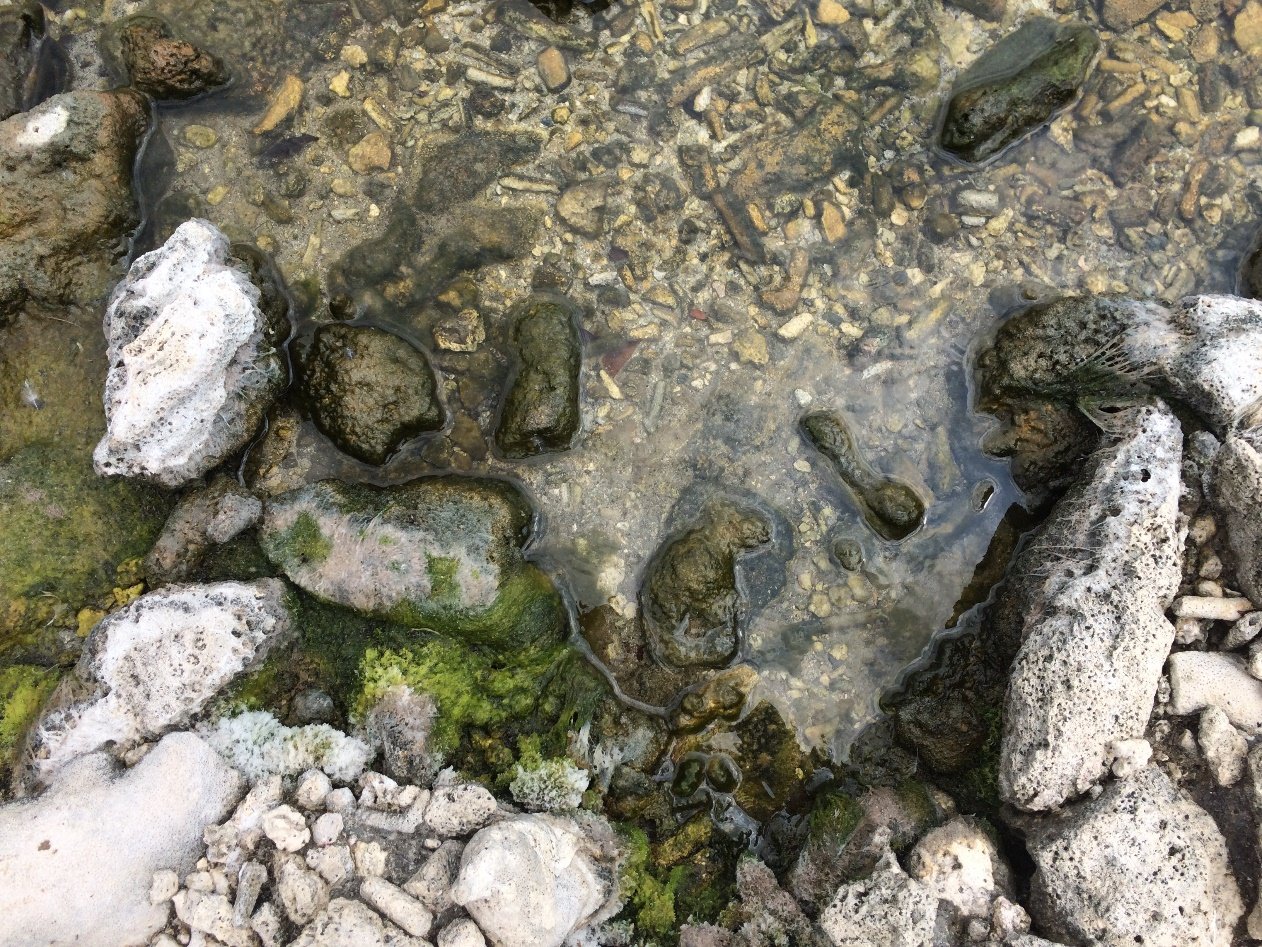Tropical Biodiversity and Microbiomes
Image: Acropora colonies near Moorea island. These corals have symbionts that are released during bleaching events - and microbiomes, collectively the Holobiont. Photo K. Bergauer
We study tropical systems using methods ranging from marker gene diversity analyses & single cell genomics to coral feeding and physiology experiments.
Coral reefs teem with biodiversity – ranging from microbial to multicellular – and the complex continuum of interactions between entities, like the healthy reef system in French Polynesia pictured in the first image. Since 2014 we have been sampling in the Caribbean to develop baseline information on the microbial communities that are found in the waters surrounding reefs, salt ponds and mangroves. We’ve taken our cell sorter to Curacao and continue to develop approaches for estimating the activities of small phytoplankton in the various aquatic habitats encountered here.
In general, this involves annual field sampling, with studies from diversity analysis, to coral feeding physiology and microbe-microbe interactions. We utilize the CARMABI field station; an amazing resource in this region). We perform our sampling by foot, kayak and small boats in these systems. Worden Lab also has run several field courses targeted at MS level students at this location.
We work in the Bay of Bengal, a tropical system that is supports a very large human population. Here, our studies are tending to focus on Prochlorococcus, due to its exceptional importance in this region. Additionally, picoeukaryotes play important roles, particularly deeper in the water column. This work is part of a collaboration with the Mahadevan Lab at WHOI. The photo below is of students and teachers (Alex and Fabian, both in back, alongside Olga and Kerstin [not in image]) in a tropical microbiology course we held in Curacao in 2023.
Left Image: A salt pond in Curacao – lots of algal growth! This particular pond can have crystal clear waters or dense growth depending on the year - we are working on what underpins this shift. Photo: AZ Worden
Right Image: Sampling salt ponds in Curacao during a trip with the King Lab (UCB) – this sample isn’t for DNA analysis but rather for the microscope! Photo: AZ Worden.



